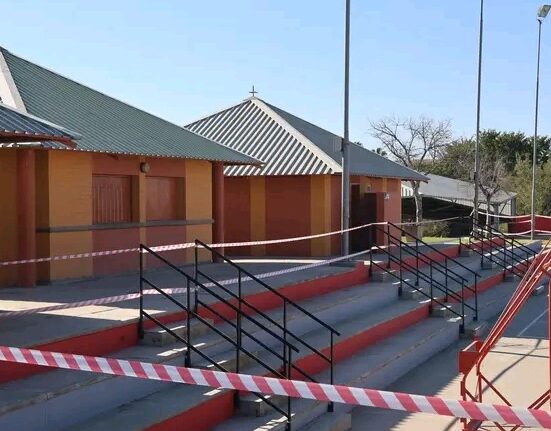Namibia, a country known for its vast landscapes and cultural diversity, has undergone remarkable population changes since gaining independence in 1990. As a relatively young nation, its demographic trends provide insights into its socio-economic development, challenges, and future potential. From a modest population at the time of independence to its current growth trajectory, Namibia’s population story reflects its resilience and progress.
Population at Independence: A Modest Start
When Namibia gained independence from South African rule on March 21, 1990, the country had an estimated population of 1.4 million people. Decades of apartheid policies had shaped the demographics, leaving a population deeply divided by geography, economic opportunities, and access to resources.
The majority of Namibians lived in rural areas, relying on subsistence farming and livestock for their livelihoods. Urban centers like Windhoek, Walvis Bay, and Swakopmund were smaller than they are today, catering primarily to administrative and commercial activities. Life expectancy was relatively low, and access to healthcare and education was limited, especially for rural communities and marginalized groups.
Population Growth Post-Independence: Steady but Uneven
Namibia’s population has grown steadily since independence, reaching approximately 2.5 million in 2023. This growth, while modest compared to some African nations, has been influenced by several factors, including fertility rates, migration, and improvements in healthcare and living standards.
1. Fertility Trends
Namibia’s fertility rate, which was around 5.8 children per woman in 1990, has gradually declined over the decades. As of 2023, the fertility rate stands at approximately 3.4 children per woman. This decline reflects increased access to education for women, urbanization, and greater availability of family planning services. However, rural areas continue to have higher fertility rates compared to urban centers.
2. Urbanization
Urbanization has been one of the most significant demographic trends in Namibia since independence. In 1990, less than 30% of the population lived in urban areas. Today, over 54% of Namibians reside in cities and towns, driven by the search for better employment opportunities, education, and healthcare. Cities like Windhoek, Rundu, Walvis Bay, and Swakopmund have experienced rapid growth, leading to the expansion of informal settlements and increased demand for urban infrastructure.
3. Migration
Migration has also played a role in shaping Namibia’s population. Internal migration from rural to urban areas has been a key driver of urban growth. Additionally, Namibia has seen cross-border migration, particularly from neighboring Angola, with many seeking refuge during Angola’s civil war and later returning after peace was restored. Conversely, some Namibians have emigrated to South Africa and other countries for work or education.
Demographic Characteristics: A Youthful Population
Namibia’s population is predominantly young, with a median age of around 22 years. Approximately 40% of the population is under the age of 15, while those aged 65 and older make up less than 5%. This youthful demographic offers significant potential for economic growth but also poses challenges in terms of education, employment, and social services.
Youth and Education
Education has been a cornerstone of Namibia’s development strategy since independence. Literacy rates have risen dramatically, reaching over 91% in recent years. Primary and secondary school enrollment has improved, although challenges remain in ensuring quality education and addressing dropout rates, particularly in rural areas.
Employment Challenges
Youth unemployment is a pressing issue in Namibia. Despite government efforts to create jobs and promote economic diversification, many young Namibians struggle to find work. This has led to calls for increased investment in skills development, entrepreneurship, and sectors like agriculture, tourism, and renewable energy.
Health and Life Expectancy: Progress Amid Challenges
Namibia has made significant strides in healthcare since independence, contributing to improved life expectancy and reduced mortality rates. Life expectancy has increased from around 56 years in 1990 to approximately 65 years in 2023. However, the country still faces health challenges, particularly in combating HIV/AIDS and addressing maternal and child health.
HIV/AIDS Epidemic
Namibia has one of the highest HIV prevalence rates in the world, with around 11% of adults aged 15-49 living with the virus. However, the country has been lauded for its robust response, including widespread access to antiretroviral therapy and prevention programs. These efforts have significantly reduced HIV-related deaths and improved the quality of life for those living with the virus.
Maternal and Child Health
Improvements in maternal and child health have been notable, with declining infant mortality rates and better access to prenatal care. However, disparities persist between urban and rural areas, highlighting the need for continued investment in healthcare infrastructure and services.
Population Distribution: Urban vs. Rural Dynamics
Namibia’s population distribution is heavily influenced by its geography and climate. Much of the population is concentrated in the northern regions, such as Oshana, Omusati, and Ohangwena, where water availability and fertile land support agriculture. In contrast, the southern and western regions, dominated by arid deserts like the Namib and Kalahari, have sparse populations.
Urban areas, particularly Windhoek, have become economic and administrative hubs, attracting migrants from across the country. This has led to the growth of informal settlements, where access to housing, water, and sanitation remains a challenge.
Looking Ahead: Future Demographic Trends
Namibia’s population is projected to continue growing, albeit at a slower rate, reaching around 3 million by 2040. The focus for the future will be on managing this growth sustainably, addressing urbanization challenges, and leveraging the potential of a youthful population.
Sustainable Urban Development
As cities expand, there is a pressing need for improved urban planning, affordable housing, and sustainable infrastructure. Initiatives like the Mass Housing Development Program aim to address these challenges, but more comprehensive strategies are required.
Investing in Human Capital
With a large proportion of the population under 25, investing in education, skills training, and job creation will be crucial. Diversifying the economy and fostering innovation in sectors like renewable energy and technology could provide new opportunities for young Namibians.
Addressing Climate Change
Namibia’s arid climate and vulnerability to drought pose significant challenges for rural communities. Adapting to climate change and ensuring food and water security will be essential for sustaining livelihoods and preventing migration pressures.
Namibia’s population story since independence is one of growth, resilience, and transformation. From a modest 1.4 million people in 1990 to a dynamic and diverse population today, the country has made significant progress in education, healthcare, and urban development. However, challenges such as youth unemployment, urbanization, and climate change remain pressing.
As Namibia looks to the future, its ability to harness the potential of its youthful population, invest in sustainable development, and address socio-economic disparities will determine its success. The journey from independence to today is a testament to the country’s resilience, and its population will undoubtedly play a central role in shaping its path forward.
Join 'Namibia Today' WhatsApp Channel
Get the breaking news in Namibia — direct to your WhatsApp.
CLICK HERE TO JOIN












